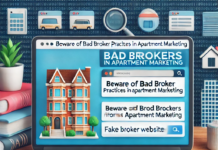For more than a decade, the chief marketing officer (CMO) role has been in a state of flux. McKinsey talked about the evolving role of the CMO as far back as 2007. Interestingly, McKinsey concluded that C-suites must expand the CMO role.
“Few senior-executive positions will be subject to as much change over the next few years as that of the chief marketing officer. Many CEOs and boards may think that their senior marketers’ hands are already full managing the rise of new media, the growing number of sales and service touch points, and the fragmentation of customer segments. But as the forces of marketing proliferation gather strength, what’s actually required is a broadening of the CMO’s role. This expansion will encompass both a redefinition of the way the marketing function performs its critical tasks and the CMO’s assumption of a larger role as the “voice of the customer” across the company as it responds to significant changes in the marketplace.”
However, since the late 200s, many experts continue opining on the changing phenomenon of CMO role. More specifically, pundits question the impact of these changes on the C-suite marketing role. As a result, many pundits wonder if the role of the CMO remains a core position. Conversely, some believe the CMO role is on the way out.
The Last Decade: Shifting Priorities and Opinions About the CMO Role
Some have gone as far as to say the CMO, or any number of newer iterations of the role, such as the digital CMO (which arose from the digital transformation), is obsolete. In 2013, for instance, Rikita Puri argued in this post at Hubspot that the digital CMO, a relatively new concept at the time, was already obsolete. In fact, he pointed out that the success rates of traditional digital technologies are already rapidly dwindling. (Yes, it’s true. Oddly, the industry already reached the tipping point at which “traditional” is an appropriate adjective in discussing certain digital trends.) Why? The rise of ad blockers is one likely cause, as well as consumers’ increasing ability to ignore – essentially blocking mentally – the same forms of advertising.
CMOs Shifting Focus
Puri makes the case for digital CMOs to become more inbound-focused. CMOs must focus on the compelling pull mechanisms that make brands irresistible to consumers. However, Puri notes the added bonus of this shift in focus. When fully leveraging the power of inbound marketing, it’s no longer a matter of competing for buyer’s attention in an over-crowded climate. Rather, it’s about earning that attention using a philosophy (inbound) that’s grounded in psychology.
In 2015, AdWeek published an article hypothesizing that the CMO role is over using British Airways as an example.
“While this idea may sound apocalyptic, I’d suggest the traditional post of CMO may well be on the way out. Consider British Airways, traditionally a champion of big brand marketing, whose recent top-level marketing restructure has seen the end of the CMO role entirely and its incumbent moved to the new post of director of customer experience.”
Trends Impacting the CMO Role
- The end of single-channel marketing
- The growth of the experience economy
- The rise of the personal narrative
- The ascent of advocacy
Author Tim Dunn explains that the challenge, at the time, was that many brands were poorly equipped to deliver consistent cross-channel experiences. Dunn noted that the many facets of modern businesses existed in silos: brand, e-commerce, retail, product, etc. Fortunately, Dunn proposed a solution by creating a new role. A centralized Chief Experience Officer, which primarily remains tasked with unifying these distinct business units. And the goal? Create a functional, cross-channel experience capable of wowing consumers and fostering brand advocacy.
CMOs Must Remain Flexible
Less than a year ago, in September 2016, Mike Edwards argued in a LinkedIn post that both the traditional CIO and CMO roles are becoming extinct in the omni-channel world. Edwards talks about the frustrations he experienced conducting a search for a Chief Marketing Officer for eBags. In particularly, his inability to find candidates with the right balance of skills and experience to lead growth for modern retailers.
The biggest obstacle, Edwards says, is that traditional CMOs tend to struggle with the speed of change in today’s business world. For example, not only does technology impact the marketing world, but also industries. Edwards uses the retail world, where business can change substantially within an hour’s time. As a result, Edwards’ solution was to split the traditional CMO role into two roles, each reporting to the CEO. In Edwards’ solution, one CMO role focuses on traditional marketing and the other focuses on content and brand management.
Likewise, the CIO role struggles with many of the aforementioned issues. In particular, an inability to partner effectively with the Chief Digital Officer or Chief Marketing Officer to drive innovation within an enterprise. Additionally, many CIOs place too much emphasis on backend systems and not enough focus on the customer experience. For example, as Edwards points out at eBags, IT priorities are driven by customer trends. Finally, he notes that the future of the CIO role, like the CMO, will have a greater emphasis on digital, likely being reimagined as the Chief Digital Information Officer (CDIO).
It’s Just Semantics. Or Is It?
Is it merely a matter of semantics? Possibly, but the underlying transformation goes much deeper. For example, Ad Age describes some comments at a recent marketing event that featured many Fortune 500 CMOs. At the event, the CMOs noted their changing functions and more.
“While the comments might have been half in jest and mostly an intellectual exercise, they are a reflection of a hard truth: In many cases, CMOs are taking on new tasks overseeing everything from data to product innovation. “It’s not just about integrated-marketing programs,” said Caren Fleit, a senior client partner in the New York office of executive-recruiting firm Korn/Ferry. “It’s about transforming how business is done.” She added that CMOs must move beyond simply being the voice of the customer to handling “enterprise — wide leadership, driving change and being connected very directly to business results.”
You could certainly label a modern, transformational marketing professional – one with a strong grasp of customer experience and advocacy and a deep understanding of the omni-channel world – as a CMO and not suffer any ill effects. It’s just a title, after all.
CMOs Address the Real Needs of a Business
 But that’s not the point. The point is that the marketing needs of today’s enterprises have transformed dramatically and continue to undergo rapid change. It’s about relevance today. And the ability to stay relevant by keeping pace with the speed of change in the industry.
But that’s not the point. The point is that the marketing needs of today’s enterprises have transformed dramatically and continue to undergo rapid change. It’s about relevance today. And the ability to stay relevant by keeping pace with the speed of change in the industry.
What today’s enterprises really need, then, are visionaries. Today’s C-suites require marketing professionals with up-to-date skill sets, a growth mindset, and an ability to identify trends. Additionally, the best executives help inspire organizational change and envision the way a company engages and interacts with consumers in the future. To put it simply, they’re innovators. It’s these professionals who have staying power in the modern enterprise. Why? Because they have the capacity to grow and adapt to changing marketing technologies, tactics, and consumer trends. These are the marketing leaders who aren’t discarded after two years when the company recognizes the need for change; instead, they’re spearheading it.
What About Those Skill sets?
Of course, today’s CMOs (or Chief Digital Officers, Chief Experience Officers, Chief Customer Officers, or whatever nomenclature a company opts to utilize) come from myriad backgrounds with varying skill sets. There is no one-size-fits-all CMO. For example, one person may have a deep understanding of the target audience in a specific industry vertical. Conversely, another may have a strong mastery of data analysis and the ability to adapt to emerging marketing technologies with ease.
Experience still matters. But what matters more is a marketing professional’s relevance to the brand. Plus, how well their skills and expertise fit the needs of the enterprise. Above all, CMOs and other C-suite marketers must be adaptable – willing and ready to ride the inevitable waves of change.
The truth is that today’s C-suite marketing execs can’t possibly be masters of every marketing skill; the marketing landscape is simply too vast and varied. For example, marketers must rely on a multitude of technologies, while leveraging a wide swath of tactics. Finally, CMOs must find ways that reach consumers across channels in the omni-channel world. (While, of course, ensuring that the customer experience is consistent and above-the-bar at every touchpoint.)
The Modern CMO

That’s why modern CMOs, CDOs, and the like must be strong leaders. These roles require acute self-awareness that yields the ability to identify skills gaps within their team. Plus, the self-confidence to hire the right marketing minds that fill those gaps. At the same time, the modern CMO must create a cohesive, all-encompassing team of marketing rockstars. Plus, this team must be exponentially more powerful together than they are alone.
In this way, the modern CMO role aligns with the responsibilities of the CEO than traditional marketer. For example, the position requires one taking the over-arching leadership role that drives innovation. Additionally, the role must ensure that all the moving parts, skill sets, and talents are in line with broader company goals and objectives. Plus, the position must keep teams working together like a well-oiled machine.
The Modern vs Traditional CMO
If you want to think about it as a matter of semantics, then yes, the traditional CMO is most certainly on its way out. However, the modern CMO remains a pivotal position within the the new-fangled C-suite title du jour. Whether it’s Chief Digital Officer, Chief Customer Officer, Chief Innovation Officer, Chief Commerce Officer, Chief Experience Officer, Chief Strategy Officer, or another flavor of the week, ensure the CMO role shares their voice at the leadership table. There are no hard and fast rules; brands are free to define whatever roles as they see fit.
At its core, however, the need for a marketing leader in the C-suite is more crucial than ever, and these executives are serving in more powerful roles with a greater prominence and relevance throughout the organization, as well as increasing overlap with other business units and executives (the ever-growing need for a strong relationship between the CMO and CIO is well-documented, for instance). In a time in which breaking down silos is a top priority, CMOs are often just the leader today’s enterprises need to drive innovation and lead the charge.






